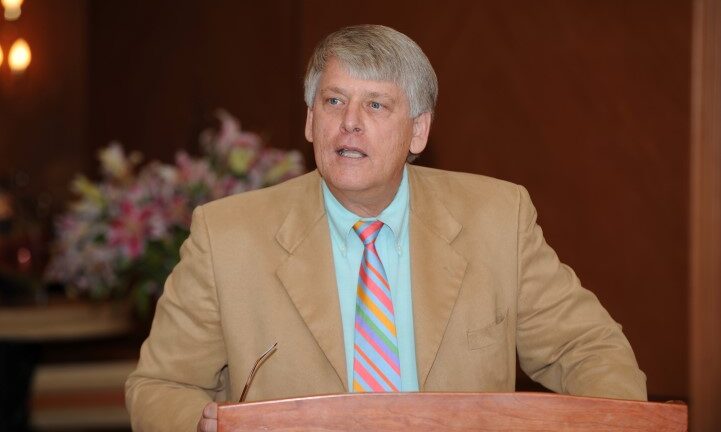American Studies, Dialogue Series, Regional Studies
Fred Lawson Lectures on Alternative Explanations for U.S. Policy in the Gulf

On May 13, 2010, Fred Lawson, Professor of Government at Mills College and the 2009-2010 CIRS Senior Fellow, gave a CIRSFocused Discussion on the topic of “Alternative Explanations for U.S. Policy in the Gulf” to a group of Qatar-based diplomats, embassy staff, and Georgetown University in Qatar faculty. The lunch talk was held at the Four Seasons hotel in Doha.
Lawson’s lecture delivered an academic overview of American foreign policy toward the Gulf region. He noted that while diplomats and politicians around the world “are busy carrying out the practice of diplomacy and the practice of international relations, there is a whole army of scholars sitting at colleges and universities in the United States trying to understand what is going on and trying to explain international relations.”
Lawson stated that “American foreign policy toward the Gulf has changed dramatically over the last three decades.” From the 1940s to the 1980s, the American presence, especially its military presence, in the region remained minimal and unobtrusive, but during the 1990s, this situation was spectacularly altered and the American military presence became a major feature of many Gulf states. The U.S. presence was not only larger, but also more overt, and culminated in large-scale military operations in Afghanistan and Iraq.
American scholars, Lawson said, have tried to explain this dramatic shift by proposing three different theses. The first of these, and the most widely accepted, is that “the United States is trying hard to solve problems of security in a world that has no overarching authority structure,” and so acts in its own self interest. This explanation is often called a “realist perspective,” and assumes that most, if not all, aspects of U.S. foreign policy represent a response to changes in the strategic circumstances in which the country finds itself due to changes in world affairs. From this perspective, in order to understand American policy toward the Gulf, there needs to be an analysis of international events that have led to a larger U.S. military presence in the region. Lawson said that a common explanation is that “during the 1990s, both Iraq and Iran had the capability to disrupt oil supplies to the international market,” thereby threatening U.S. interests and prompting greater military engagement in the region. But, he cautioned, there are far more compelling reasons for the activation of regional U.S. military engagement, including the strategic rivalry between the United States on one hand and the People’s Republic of China, India and Japan for influence in Central Eurasia and the steady weakening of U.S. dominance in the international economy.
The second explanation for U.S. policy emphasizes the United States’s unique ideological and historical characteristics, or “strategic culture.” This explanation, Lawson said, assumes that “the U.S. respects the principles of limited and representative government, values the individual liberties of citizens, and believes that the market offers the best way to organize the economy.” Therefore, policy toward the Gulf is fundamentally shaped by these concerns. During the 1980s and 1990s, both Iran’s and Iraq’s authoritarian governing structures represented forms of rule that were directly antithetical to the United States’s liberal principles and values. As a result, Lawson argued, “the United States conceives of itself as having an obligation to bring the advantages of limited government and market economies to others.”
The third, and final, outlook characterizes America as an empire that is interested in expanding territorial control and cultural influence around the world. This is a different notion of “empire” from the traditional one, Lawson said, in that, in the Gulf as in other areas of the world, “the U.S. is invited to take responsibility” in order to establish regional orderliness. The decentralized global U.S. military presence reflects the peculiar command structure of the American armed forces, which consists of a “network of regional commands around the world,” he said.
In conclusion, Lawson argued that these three explanations are not necessarily mutually exclusive, but that different aspects of American foreign policy can be linked to each of these lines of argument.
Article by Suzi Mirgani, CIRS Publications Coordinator.